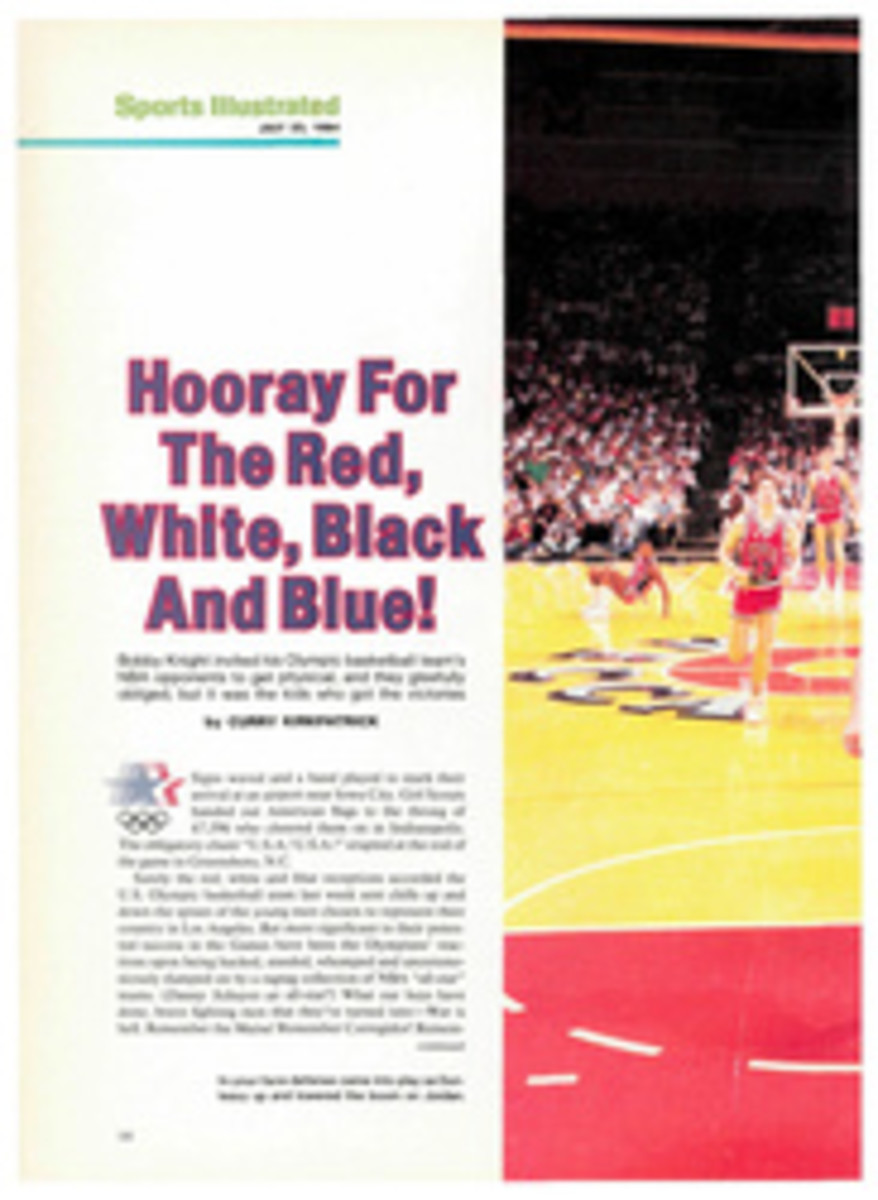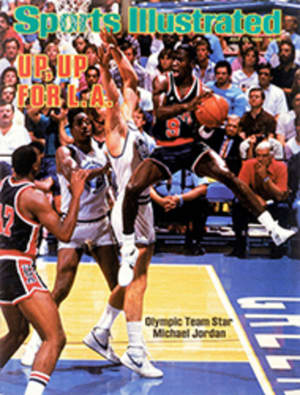
Cal can bring 'em up right
In late April, when Minnesota centerfielder Jim Eisenreich was disabled for the third straight year with a nervous disorder, the Twins' hierarchy was divided on whether to promote 23-year-old farmhand Kirby Puckett as his replacement or go with Darrell Brown, who was already on the Minnesota roster. "Puckett's a great outfielder," said one faction. "But can he hit major league pitching?" asked another. Finally, with some reluctance, owner Calvin Griffith was won over by the partisans, and Puckett was brought up from Triple A Toledo, where he was batting .263.
There's no division of opinion over the 5'7", 175-pound Puckett anymore. In his first start Puckett singled four times in five at bats against the Angels. Then he ran up a seven-game hitting streak—and has hardly let up since. Through Sunday Puckett had a .332 average, which would be fourth in the league if he weren't 22 plate appearances short of qualifying for the batting title. Puckett has bunted safely a dozen times, stolen nine bases and played well in center, where he has 10 assists, first in the league. There's no better reason the Twins, a consensus choice to finish sixth in the American League West, were in third place, two games behind California at week's end.
After winning 10 of its last 15 games before the All-Star break, Minnesota opened the second half of the season last Thursday with a 4-2 win over East Division-leading Detroit. And Puckett showed no sign of throttling back. Not only did he single to drive in what proved to be the decisive run, but he also took second on the play when leftfielder Larry Herndon made a lazy throw home. The Twins haven't had a base runner that aggressive since Zoilo Versalles in the mid-'60s. Ranging all over the outfield, Puckett had six putouts. The Twins haven't had a centerfielder that aggressive, period.
"He can run and field and put the bat on the ball, and that's what you look for in a leadoff hitter," says Baltimore's Al Bumbry, who himself has been doing just that for most of the last 11 seasons. Puckett is also evidence of Minnesota's scouting acumen, which it uses to good advantage when drafting or trading for young players. Twelve of the 25 Twins, including seven of the nine regulars, come from their farm system. In addition to Puckett, two other former Minnesota farmhands—24-year-old first baseman Kent Hrbek (.334) and 27-year-old All-Star catcher Dave Engle (.300)—at week's end ranked among the league's top hitters. As for pitching, in December 1983, the Twins sent outfielder Gary Ward to the Rangers for pitchers John Butcher, 27, and Mike Smithson, 29, and a minor leaguer. Butcher (6-6 with a 3.23 earned run average) and Smithson (9-7, 3.68) have combined with 24-year-old Frank Viola (10-7, 2.90, six straight wins), a Minnesota second-round draftee in '81, to help give the Twins the second-best team ERA (3.76) in the West.
"Sure they scout well," says Al Campanis, the Dodgers' vice-president in charge of personnel, "but you get good players when you have one of the first five draft choices. Where have they drafted in the last five years?" Hey, Al, Minnesota has had a top five pick only once over that span. In fact, among the current Twins only Puckett (1982) and third baseman Gary Gaetti (1979) were first-round choices. Because Minnesota hasn't been willing to bid competitively for big-name amateurs, it has had to rely on making clever low-round picks and recruiting players from outside the talent-rich Sun Belt states and Caribbean countries. The three best Twins players ever—infielders Harmon Killebrew and Rod Carew and pitcher Jim Kaat—were signed from such not-so-hotbeds as Idaho, New York City and southwestern Michigan, respectively. And give Calvin credit for demanding Engle, then a Class A player in the California system, as a throw-in when Carew was traded to the Angels in 1979. "We don't draft the 'best athletes,' as some clubs do," says Griffith. "We draft what we need. One year we'll draft shortstops, another, second basemen."
Instead of relying on a single great scout, the Twins use 19 area scouts, most of whom have been with the organization for 20 or more years. "We understand them and they understand us," says vice-president and farm director George Brophy. "They can read a player well for us, like a jockey who knows a stable, so we'll let them scout, evaluate and sign a prospect."
Another thing the Twins have going for them is the much-criticized Griffith. Say this for him: He's nothing if not accessible. In 1978 a concessions employee in Metropolitan Stadium told him about a prospect at nearby Kennedy High. Griffith drove over and found Hrbek, Minnesota's best player.
Puckett's signing evolved from another happy accident. During the 1981 strike, assistant farm director Jim Rantz took time off to see his son, Mike, play in an Illinois collegiate summer league. Puckett was in the same league. "It was about 90 degrees out, and Kirby had a homer, a double and maybe two stolen bases," says Rantz. "I was impressed that he showed such enthusiasm and played so hard."
Though the Twins made him their first choice in the January 1982 draft, Puckett elected to remain at Triton Junior College in River Grove, Ill. The youngest of nine children from a family raised on Chicago's South Side, Puckett the previous year had dropped out of Bradley University when his father died. "I knew I was a good player," he says. "I wanted to prove to myself that I could go to school." At Triton, Puckett raised his grades, became Region IV J.C. player of the year and then signed with the Twins.
Playing for low-Class A Elizabethton (Tenn.) that summer, he hit .382 and led the Appalachian League in seven statistical categories. The next year he was named the California League's best major league prospect after hitting .314 for a high-Class A team in Visalia. Despite these sterling numbers, Puckett twice went to the Instructional League, mainly to learn how to get more power behind his accurate throws. This spring the Twins sent him to their Triple A camp, and he easily made the Toledo roster.
"He's not going to slump very often because he makes contact, runs well, bunts and knows how to hit in here," Rantz said the other day while watching a game in the Humphrey Metrodome. At that moment, Puckett batted a ball off the artificial turf and over the pitcher's head and beat it out for a hit. "See?" said Rantz, "That's a dome hit."
Puckett believes he can improve by using his dome—which he shaves—a bit more. He had only three walks in 244 at bats as of Sunday. "When I discipline myself, I'll be a better hitter," he says. "If they want me to, I'll play winter ball and maybe come back and get a couple hundred walks."
If Puckett's come-to-play attitude pleases his bosses, his easygoing nature suits his teammates. Puckett has his name tattooed on his left arm, but that's tame stuff in the Twins' madcap clubhouse, where The Hood—a grotesque mask with K-K-K written on it—is given to players who strike out three times in a game. There's also The Sombrero, which goes to a pitcher who surrenders three homers in a game.
"They're a steady bunch," insists manager Billy Gardner. And part of what makes them so—at least on the field—is Puckett, their rookie leadoff hitter, who has already become a steady problem for opposing managers.
PHOTO
Since Griffith called him to Minnesota, Puckett has carried a big stick, batting .332.

